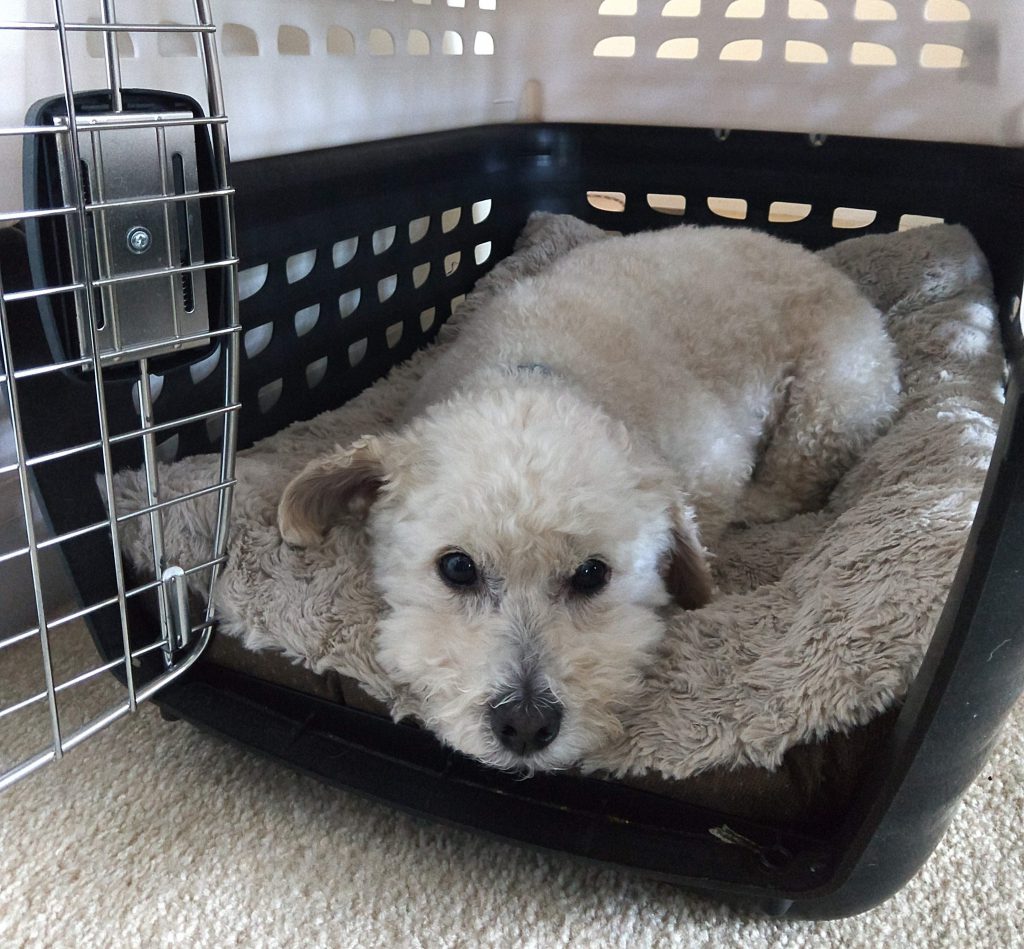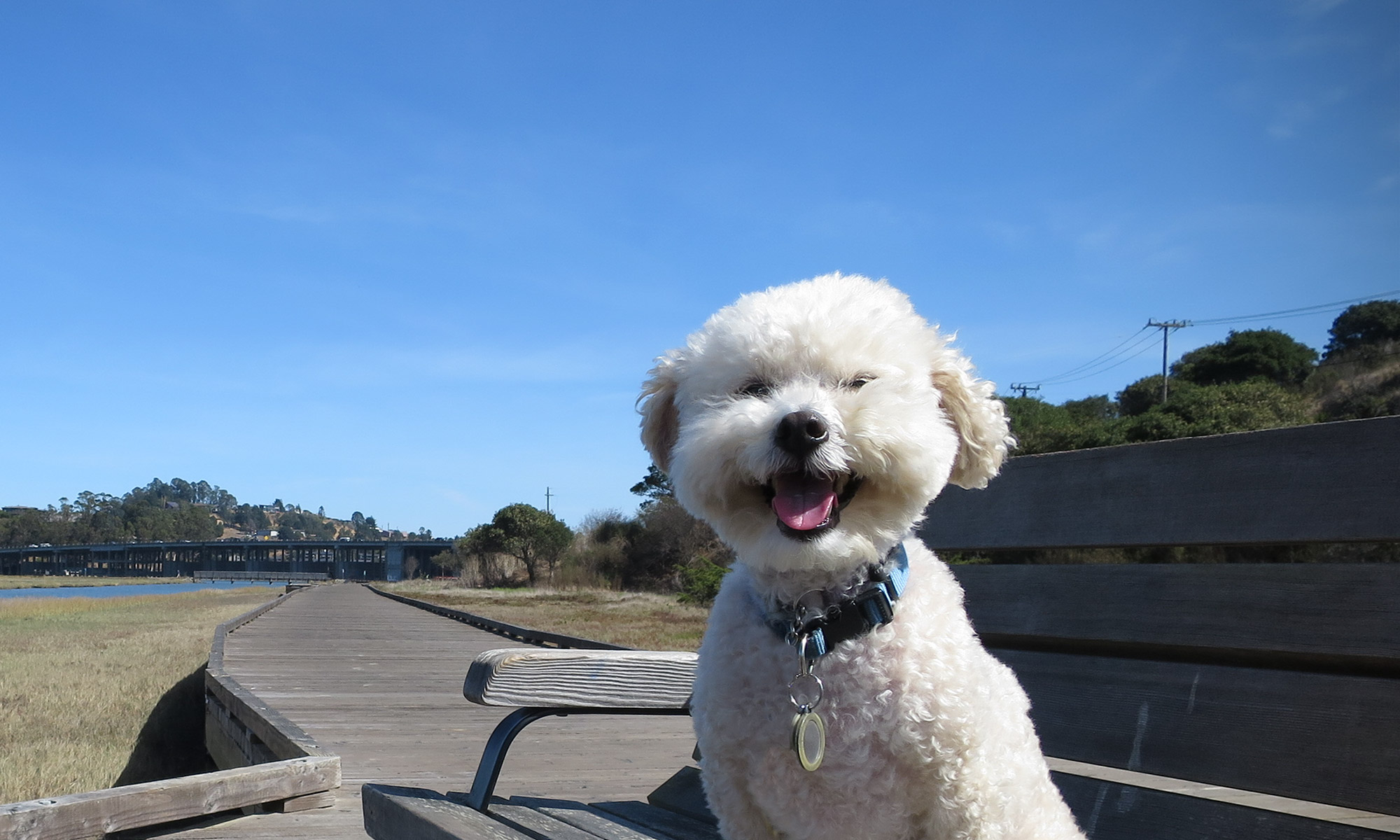When I run my orientation for dog training, I always make sure to talk about the benefits of crate. Many people don’t like the idea of a crate because it resembles a doggie prison as dog is locked inside and can’t move around freely.
As a dog trainer, I find crate being an invaluable tool to manage and transport dogs in so many ways.
As a dog owner of a fearful and resource guarding dog, crate has given my dog so much more peace of mind and security.

Here are my 7 reasons for crate training:
- A safe spot for a dog. Dogs are den animals. They like to be in a small enclosed area. When they are in their crates/dens, they don’t need to worry about what’s going on outside. They can truly relax and just chill. I always tell my students, everyone has their own space in the household. Men have their men-cave. For me, I like baking, kitchen is my space. For my dog, it’s his crate!
- A safe carrier for transportation. We have heard so many cases of a dog running loose on a highway or a dog badly injured after a car accident because they were not secured inside a car. When you are driving with your dog loose in your lap or in the back seat, your dog has no protection whatsoever during an accident. We all know it is safe and required to buckle-up our seat belt when we drive, why don’t we do the same to protect our dogs? Keep your dog in a secured crate inside a car would give your dog most protection.
- A home base for road trips and dog sport events. Many of us have trouble sleeping in a hotel bed because it is something unfamiliar. We may bring a pillow or a blanket from home to help us sleep easily when we travel. Crate serves the same for dogs. It is your dog’s “home away from home”. It is your dog’s “safety blanket”. With a familiar crate and familiar bedding inside, your dog can find the familiar scent in a strange and new location. It will help them settle with ease. If you have a dog who gets anxious and worried in a new location, bringing his familiar crate will help him settle and relax.
- A great tool to manage a young puppy who is still learning potty training. Dogs often don’t soil their sleeping area except puppy mill dogs. When your pup hasn’t mastered the potty schedule and can’t control his bladder movement, it’s a good idea to keep him in a crate that is just the right size for him. When you can’t keep an eye on your puppy, the crate also lets you manage your pup’s whereabouts inside the house so he can’t just go explore and eliminate behind your back.
- A safe location to keep your dog out of trouble when you run errands. Most dogs have to learn to enjoy alone time properly. Some dogs get bored and start to rearrange furniture if you leave the house to their own devices. Keeping a dog inside a crate (up to 4 hours a time) can prevent your dog become trouble-maker and destroy your leather couch, your designer shoes or counter-surf on food that may not be safe for dogs.
- A safe location for a dog who finds dealing with house guests too much of stress. Some dogs love interaction with people but there are some other dogs who find interaction with humans, especially the small humans tiring and stressful. If you have a dog who prefers to be a wallflower during a gathering or party, it’s best that you keep him in his happy place, crate, with toys and chews to enjoy by himself. This way, you get to focus on being a good host and tend to your guests’ needs while your dog is enjoying his rare alone time all to himself.
- A safe location for a dog during disaster evacuation. California has had a few fire disasters in recent years. As much as we want to be ready to evacuate during fire danger, we want to make sure our pets can come with us, too. Having a crate-trained dog means he/she can come with us when we evacuate to a temporary disaster shelter. If our pets aren’t crate-trained, they would need to go to animal-specific shelter for emergency boarding. Think of the high stress for both people and pets during that time plus being separated from each other. Your pets would have no idea what happened and why they are in an unfamiliar location without you. I’d prefer my dog is with me wherever I go!
A rule of thumb for getting the right size of crate: the size of crate should be big enough so your dog can walk in, stand, turn-around and lay down without hunching his back or purposefully curling up his feet.
Different designs and materials will need to be considered depending on how your dog will use the crate. If your dog knows how to unzip zippers, you may not want to get a soft crate with zipper. If your dog has separation anxiety, a crate may not be the optimal choice when you have to leave him alone.
Never force your dog into a crate. Take the time to introduce a crate to your dog and make the crate the best place to be. Once your dog loves it, you will find him spend more time in it without you asking him to.
After reading these benefits, I hope you are now interested in getting a crate for your dog and start crate training with him!
